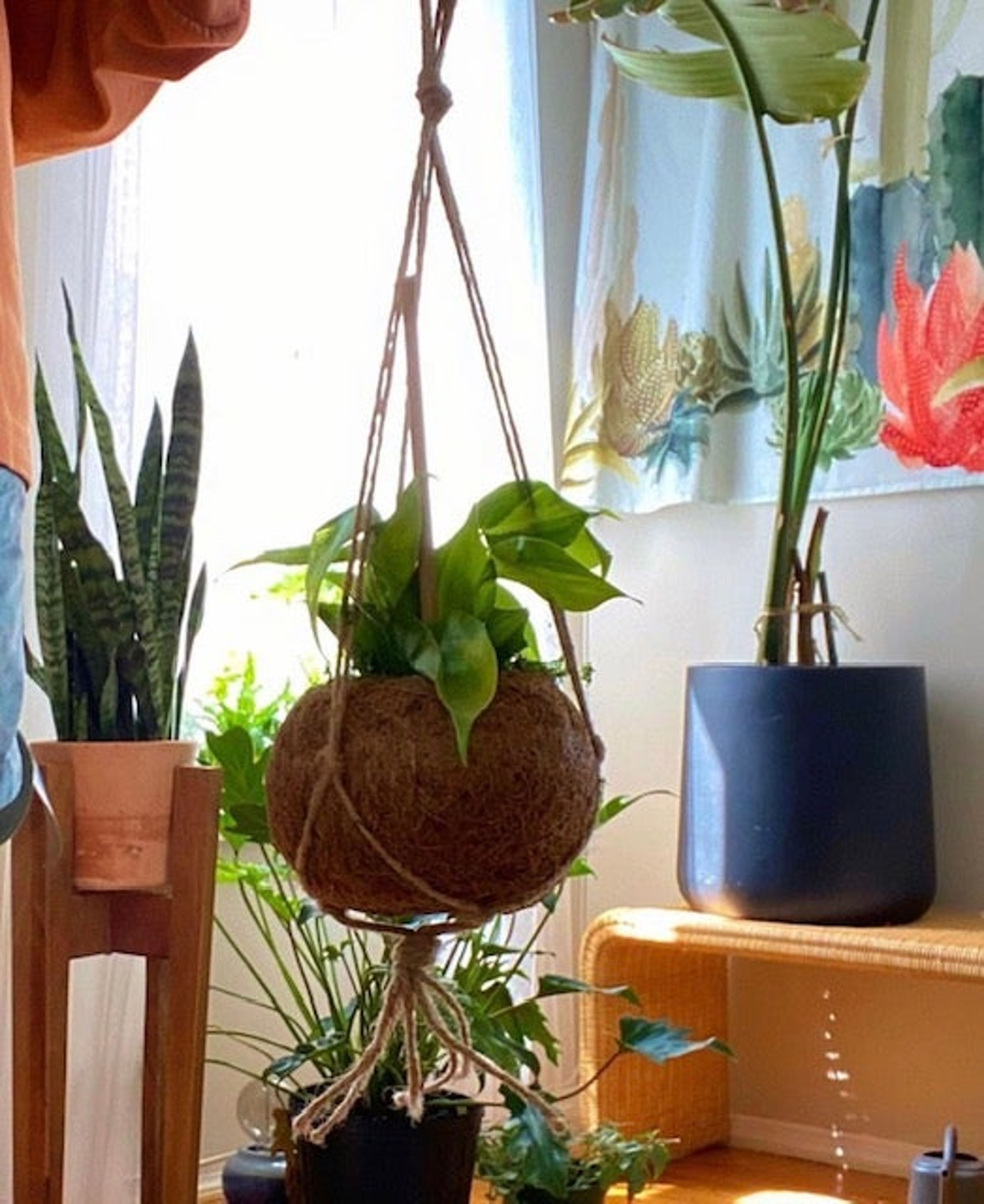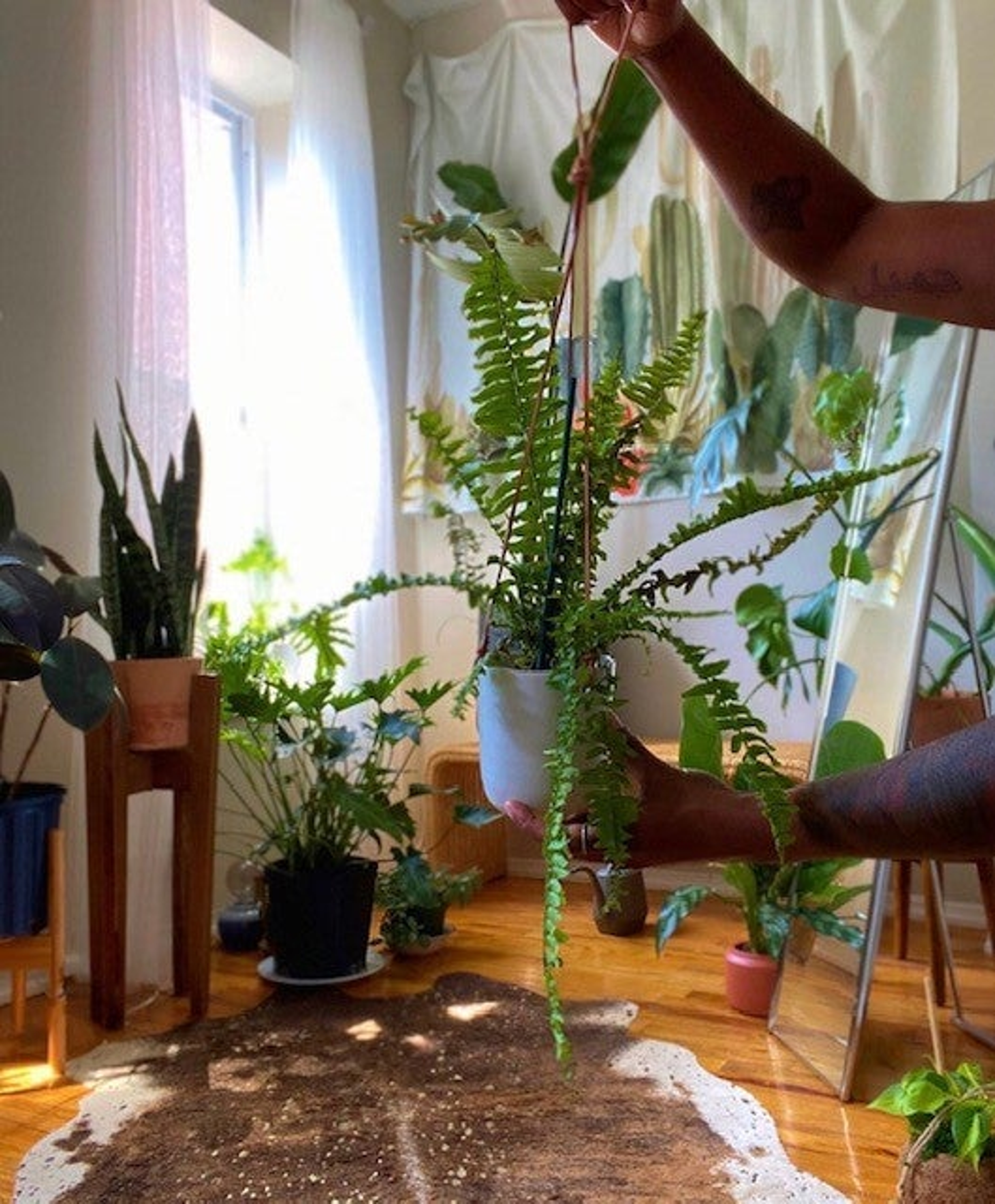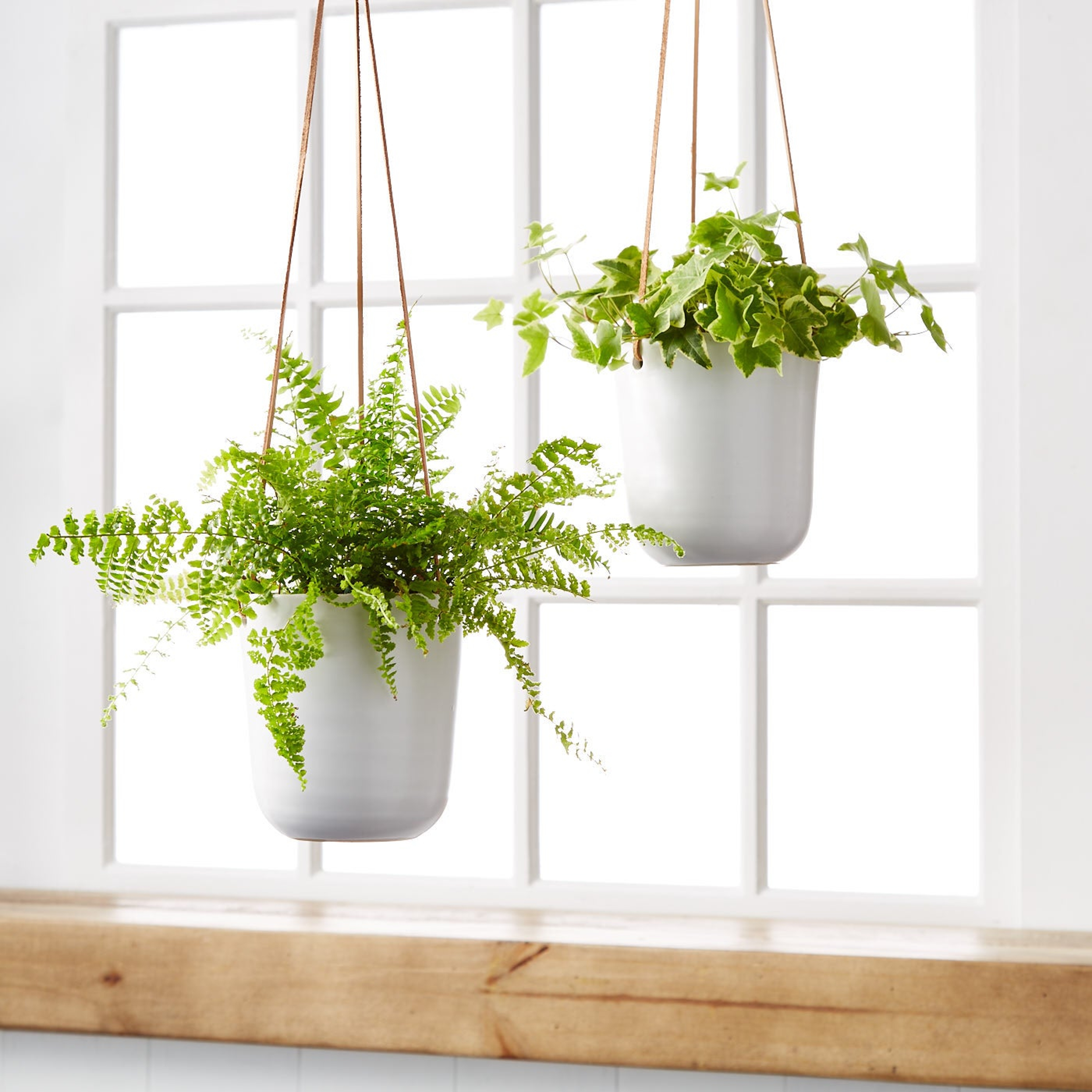Hanging Plant Care
Oct 02, 2020
Hanging house plants get a lot more of the good stuff—more light, airflow, and great drainage. But their airborne state also leaves them more vulnerable to water-loss and damage from wayward pets, passersby, and outdoor wind damage. Here are some essential guidelines, for placement, how to care for hanging plants, and repotting, to keep hanging plants happy and make them a highlight of your home décor.

Choosing Places to Hang Plants
Where there is light, you can hang. Some plants need bright direct sunlight, while others need more shade, but overall any bright window is a shoo-in for hanging plants. Place groups of complementary plants of varying sizes at varying heights to create artful collections. Complementary plants should look good together and have the same growing needs.
Small hanging pots are perfect for decorating brightly-lit window sills or mantles. Humidity-loving tropicals look pretty cascading above bathtubs or showers where they can enjoy the steam along with you. Large hanging pots make a statement in any spacious sunroom or bright spot in the home. Just be sure that you take into account watering and spill zones. Antique furniture or your most treasured textiles should not reside below or near a hanging house plant.
Wherever you place them, make sure hanging plants are away from traffic. An ill-placed pendulous pot is sure to knock a few heads, lose a few stems, and eventually get broken. Cat owners must also keep pots and long stems out of leaping or batting distance, and if you like to take hanging house plants outside in summer, place them in low-wind areas near the home.

Caring for Hanging House Plants
Check hanging house plants every few days to monitor their water needs. During warmer, summer times they will need more water and in cooler, darker weather less frequent watering is required. Low-water plants, such as succulents, like it dry in winter. Twice monthly watering is usually sufficient. To make it easier, use a long-spouted watering can to reach and fill high-up hangers. An oilcloth splat mat can be placed below pots to keep the floor dry while watering. Smaller planters, like Kokedama, can be brought down and watered in the kitchen sink.
Find the right fertilizer for your house plant, whether you are growing a tropical foliage plant, fern, or succulent. Slow-release fertilizer is the most worry-free option because it only needs to be applied every few months. Water-soluble fertilizers require more frequent applications.
Inspect hanging stems and foliage for pests and remove any dead or damaged stems as you see them. Apply insecticidal soap and clean plants as soon as you see any pests, like aphids, whiteflies, or mealy bugs. Cleaning also removes dust and keeps houseplants looking their best. Gently spray plants off in the shower or sink every few months to keep them dust-free and clean.

Decorating with Hanging Pots
Most house plants need to be repotted after two to three years. When choosing a new pot, have fun. It’s nice when hanging baskets and pots are as fun and festive as the house plants they carry. Pick tastefully painted Italian or Mexican ceramics to complement pendulous succulents, like string of pearls. Classic vining house plants, like English ivy, look right at home in funky, retro orange, or avocado-green macrame plant hangers straight out of the 1970s. Simple, modern planters or naturalistic containers, such as our coconut pith Kokedama are perfect foils for tropicals, such as pothos or arrowhead vine. Whatever pot you pick, choose a well-drained one. Drainage is essential for aeration and strong root growth.
Hanging House Plants
Heavyweight hooks, hangers, or brackets are the best insurance for keeping weighty planters, and anything below, safe. The second best insurance is making sure they are properly installed--whether fixed to a ceiling or wall made of drywall, wood, or mortar.
For example, when mounting a ceiling hook, choose a large, sturdy hook attached to a ceiling joist (supporting beam). Before mounting the ceiling hook, you will need a step ladder, stud-finder, pencil, and cordless drill fit with a bit that’s approximately the same diameter as the hook’s threaded shaft. Use your stud-finder to safely identify the joist. Mark in pencil the joist location where you want to hang your plant. Drill a straight hole in the spot that is a little deeper than the length of the hook’s threaded shaft, and then twist the hook’s base into the hole until it is firmly affixed and flush. Then hang your planter!

Repotting Hanging House Plants
Repotting hanging plants can be a messy business, especially when plants are large and their stems are long and easily damaged. Care must be taken to maintain a plant’s good looks as well as its long term health. Start by preparing the repotting area and materials.
Clean a table or outdoor area and put down a splat mat before starting work. You will need a quality potting mix suited to your plant (cactus mix for succulents, all-purpose mix for ivy, and a water-holding mix for tropicals), a larger hanging pot, pruning shears, and slow-release fertilizer.
Start by removing any awkward strings, wires, or supports that disable you from removing your plant from its old pot or basket. Next, set the pot on its side and lift any stems above the pot and along the table to protect them from damage. Carefully remove the plant from the pot. If its roots are densely intertwined, or pot-bound, carefully tease them apart. This will help them establish new roots faster and take up water and nutrients more easily.
Put a shallow layer of mix into the new pot, and gently lift and fit your plant’s root ball into it. The final planting should have at least 2 inches of headspace at the top for watering, so adjust the soil at the base of the pot accordingly. Set the pot upright, and fill in the sides with the fresh mix, working is down with your fingers. (During this step you will have to lift any leggy stems along the side of the pot, so be careful.) Pack the soil down firmly enough to ensure good soil-to-root contact and avoid air pockets. Trim off any damaged or unwanted stems, sprinkle the soil with slow-release fertilizer, and then water your pot in until water runs through to the bottom of the new pot. Check along the sides to look for holes in the soil caused by air pockets. Fill in receded spots with a little extra mix.
With good care, smart placement, and a little design sense, your hanging plants will be the highlight of your house plant collection.






